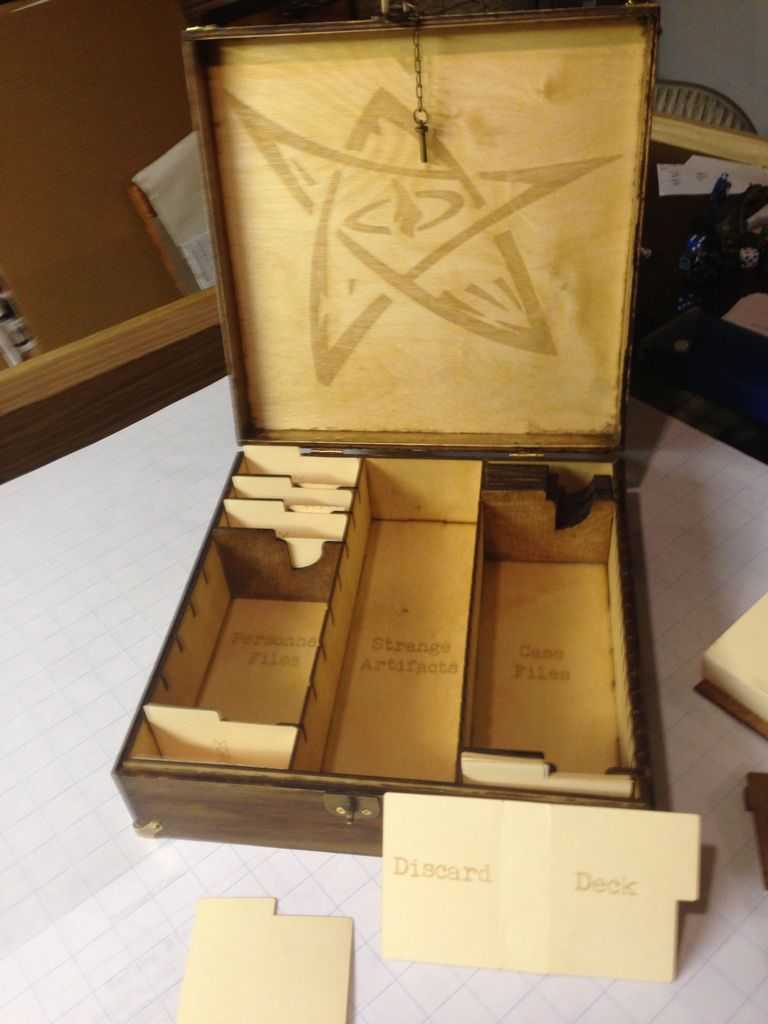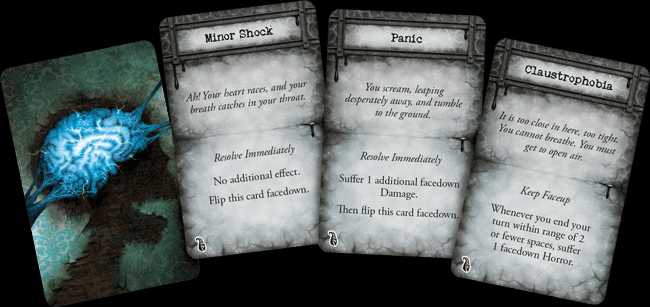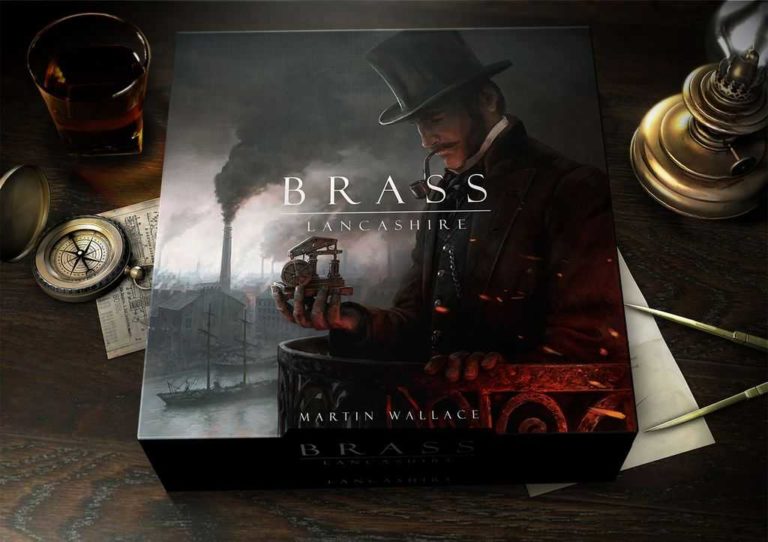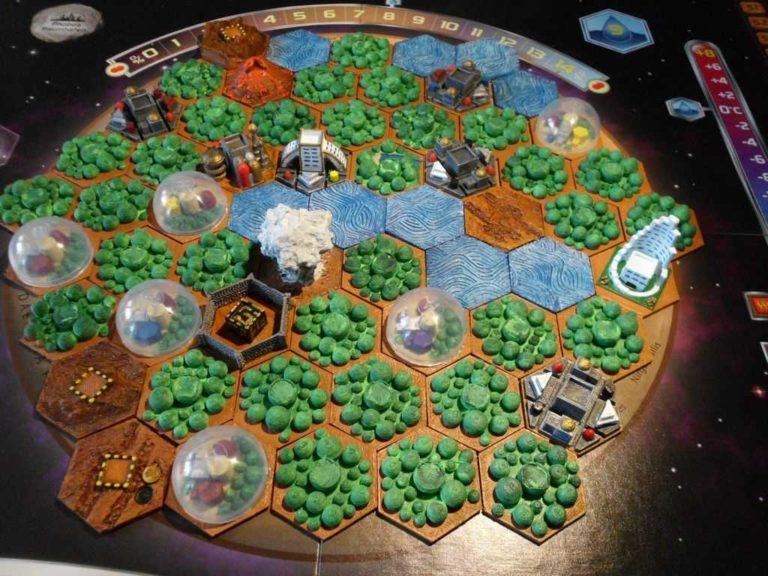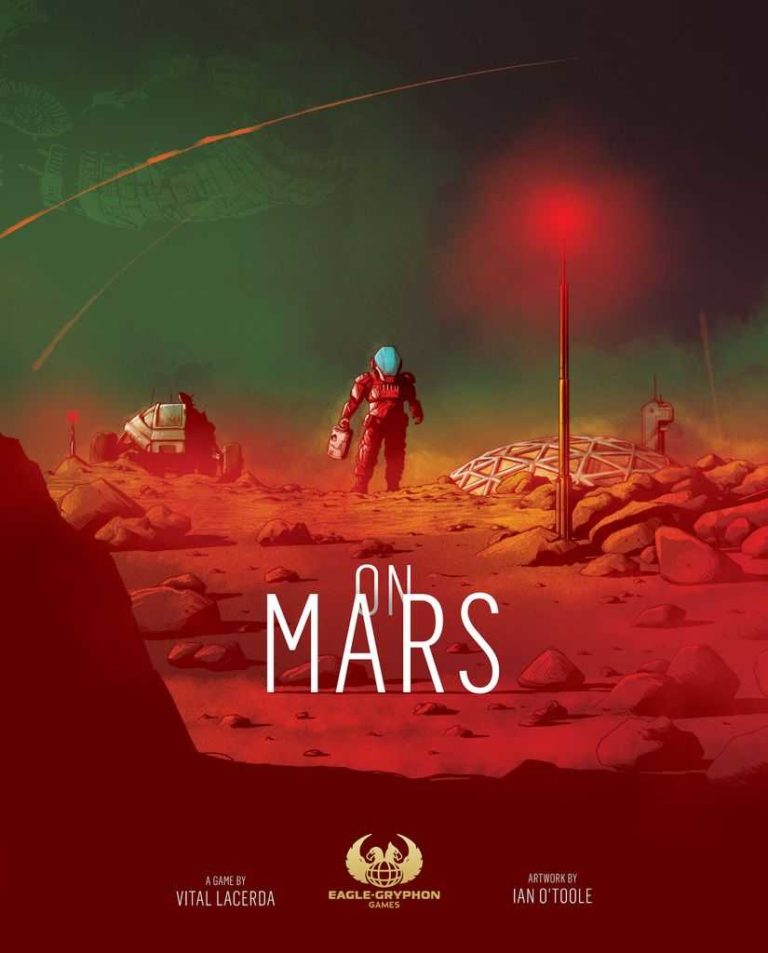Arkham Horror: The Card Game Review – A Comprehensive Look
Arkham Horror: The Card Game Review – A Comprehensive Look
Picture a dimly lit room, a palpable sense of dread in the air, and the haunting feeling that every decision could be your last. This is the world of Arkham Horror: The Card Game, a living card game (LCG) that has made a lasting impression on my gaming life. Whether you’re stepping into the shoes of a hard-boiled detective or a savvy librarian, this game takes you on a journey through Lovecraftian horror like no other. Through this comprehensive Arkham Horror: The Card Game review, I’ll share my experience of delving deep into the realms of the unknown, accompanied by eldritch entities and unspeakable terrors.
Key Points:
- Arkham Horror: The Card Game is a living card game set in a Lovecraftian horror universe.
- It features rich storytelling, strategic gameplay, and complex deck-building.
- The game’s essence lies in its ability to transport players to the bleak streets of Arkham, where every decision matters.
- The unique Living Card Game (LCG) structure allows for precision in deck-building and regular updates to the game’s mechanics and story.
- The game offers both solo and multiplayer modes, with each providing a different experience.
- Expansions add new content and challenges, enhancing the game’s replay value.
- The Revised Core Set brings enhancements and a more streamlined experience for new and veteran players.
Rich storytelling, strategic gameplay, and complex deck-building are just the tip of the arcane iceberg that makes this game a staple in my collection. I’ve spent nights on end, both in solitary contemplation and among the chatter of friends, trying to unravel the mysteries laid out before us. Since my first encounter with the core set, it’s been an enthralling ride through expansions, campaigns, and the inevitable grip of the ever-present RNG-fest comments that follow games of this nature. Let’s dive into why this game might be the next great addition to your gaming shelf or, possibly, a challenge for even the most fervent board game enthusiast.
Delving into Arkham Horror: The Card Game
Delving into Arkham Horror: The Card Game feels like peeling back the layers of an intricately woven narrative, each unfolding to reveal a universe teeming with mysteries, risks, and rewards. From the craftsmanship of its cards to the collaborative nature of its design, this LCG has captured the hearts of many. But it’s not without its quirks; each session is an odyssey of unpredictable outcomes where the luck of the draw can either be your downfall or your salvation.
The Essence of Arkham Horror: The Card Game
The essence of Arkham Horror: The Card Game lies in its ability to transport you to the bleak streets of Arkham, where every corner turned unveils a new horror. As a player, you become an investigator, each with unique abilities and backstories, drawn into a variety of dark and twisted scenarios. Throughout your adventures, you’ll collect clues, fight monsters, and make critical choices that influence the unfolding narrative of the campaign.
What truly sets the game apart for me is that your deck serves as your character’s resources, abilities, and even health, representing both your arsenal and your vulnerabilities in the face of ancient evils. I’ve felt real anxiety as I drew cards, knowing that each could be a lifeline or the harbinger of my character’s doom. The intertwining of character and deck makes every playthrough a personal experience, imprinting memorable gaming moments that last long after the cards have been packed away.

The game’s uniqueness lies in the intertwining of character and deck, creating a personal experience with memorable gaming moments.
The Unique LCG Structure
Arkham Horror: The Card Game stands out with its unique Living Card Game (LCG) structure. Unlike traditional collectible card games that often require the hefty investment in randomized booster packs, with an LCG, the expansions are known quantities – you know exactly what cards you’re getting. This means, strategically speaking, you can plan your deck-building with precision and predictability.
But with Arkham Horror, the predictability stops there. The LCG model allows for a steadily growing narrative, where each expansion can be viewed as a new chapter in a gripping novel. In my adventures, I’ve come to appreciate this model because it allows for regular updates to the game’s mechanics and story, keeping even the most seasoned players on their toes. Moreover, it mitigates some of that problematic “RNG-fest” feeling mentioned in many reviews, as I find joy in managing deck construction and strategic planning within known limitations.
Gameplay Mechanics and Experience
Arkham Horror grips players with a subtle blend of intrigue and complexity wrapped in straightforward gameplay mechanics. At its heart, the game strikes a daunting balance between the richness of an RPG and the sleek design of a card game. Each session can be seen as a narrative episode, where you and your fellow investigators strive to avert the cosmic horrors threatening to overwhelm Arkham and, indeed, the world itself.
Setting Up Your First Game
Setting up your first game of Arkham Horror can be akin to opening a dusty tome filled with arcane rituals – it’s a process that demands attention to detail. You’ll choose an investigator, construct your deck, and set the stage for the narrative to unfold. Adding that personal touch to your deck before the game increases the tension and investment in your character’s journey.
I vividly recall my first time setting up the game, finding a misplaced Lita Chantler card entwined within the player decks – a frustrating hiccup, for sure, but one that taught me the value of meticulous preparation. Once the setup is complete, however, what lies ahead is a deeply immersive experience – one that’s well worth the initial investment of time and effort.
Adding a personal touch to your deck before the game increases the tension and investment in your character’s journey.
The Flow of Play and Turn Structure
In Arkham Horror, understanding the flow of play and turn structure is like learning an intricate dance, each step pivotal to the narrative’s progress. The game runs in rounds, with a thematic structure of phases that guide the story and action. First comes the Mythos phase, casting an ominous shadow as it brings new challenges and dire events. Then, in the Investigation phase, players take turns maneuvering their investigators, gathering clues, and navigating treacherous encounters.
Actions must be chosen wisely, as they are your primary currency within the game; spend them recklessly, and you’ll soon find yourself succumbing to the terrors that lurk around every corner. Veteran players, or those seeking a more methodical approach, may resonate with the sentiment that significant success in Arkham Horror is often a result of meticulous action economy and sober strategic planning, not just raw luck.
The World of Arkham Horror
Embarking on a journey into The World of Arkham Horror is to dive headlong into a realm where brooding atmosphere and gripping narrative are paramount. The attention to detail in crafting this eldritch universe is unquestionable, providing a rich backdrop for each chilling tale you’ll navigate through the game.
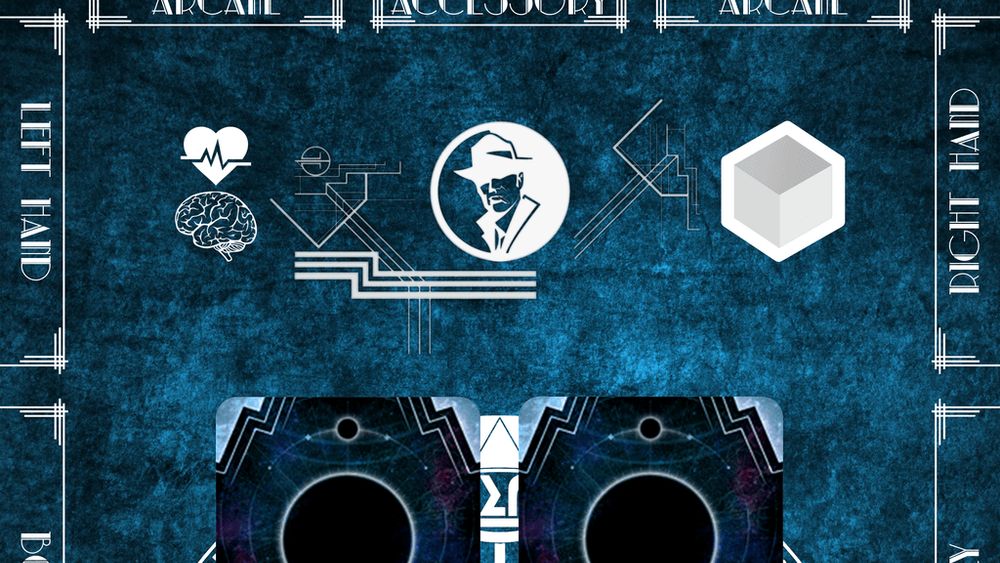
Immersive Theme and Narrative
What sets the pitch for Arkham Horror: The Card Game is its immersive theme and rich narrative. The stories and characters draw heavily from Lovecraftian horror, enveloping players in a world where reality is thin, and every shadow can hide a nightmare. The writing is exceptional, weaving a complex web of mystery and suspense that entices you to explore every nook and cranny of Arkham’s lore.
I remember one campaign where we commenced with aspirations of heroism, only to find ourselves gripped with paranoia as we battled not just the occult but also our crumbling sanity. Choices matter in this game, and outcomes from one scenario can cast long shadows over subsequent plays. This feeling of continuity is what breathes life into the characters’ struggles, pulling you deeper into the tale.
Every time I introduce new players to the game, I can’t help but revel in watching their reactions as the flavor text and thematic missions leave them spellbound. It’s this dedication to the art of storytelling where Arkham Horror truly shines, creating an experience that is as much about the journey as it is about the game itself.
The immersive theme and rich narrative of Arkham Horror: The Card Game draw players into a world of Lovecraftian horror, where choices matter and outcomes cast long shadows over subsequent plays.
The Role of Setting in Player Engagement
The role of setting in Arkham Horror: The Card Game is as crucial as the mechanics themselves, creating an atmosphere that engages and sometimes overwhelms the senses. The locations you explore from the streets of Arkham to otherworldly realms are more than just boards to play on; they are living pieces of a greater puzzle that dares you to solve it.
This sense of place is enhanced by the vivid artwork and components that make every session a visual feast. As an avid gamer, I’ve felt the tactile pleasure of handling the tokens and cards, feeling a connection to the story they represent. The gameplay becomes an intricate dance between player actions and environmental responses – navigating this maze is adrenaline-inducing, suddenly making you aware of how invested you’ve become in the fate of your investigator. To quote a fellow player, “I never knew cardboard could evoke such emotion.”
Deck Building and Strategy
At the heart of Arkham Horror: The Card Game lies an intricate puzzle of deck building and strategy, where each choice carves a different path through the mists of Arkham.
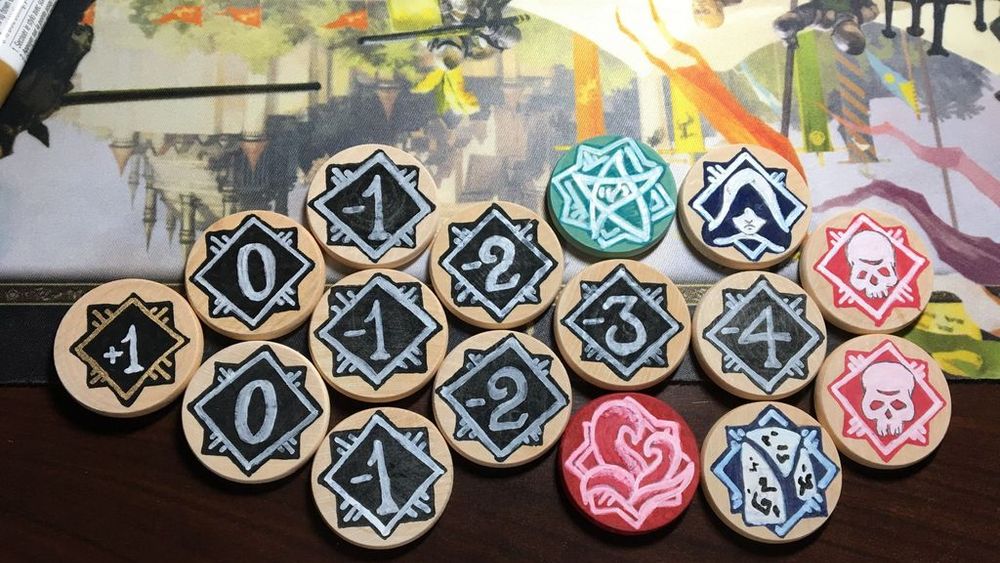
Constructing Your Deck
Constructing your deck in Arkham Horror: The Card Game is akin to crafting a personal narrative. You must balance your investigator’s strengths with the demands of the scenario at hand. Will you focus on gathering intelligence, fighting the monstrous entities, or perhaps ensuring your mental fortitude holds against the onslaught of cosmic horror?
I find deck building to be one of the game’s most captivating aspects, as it allows for deep customization and personal expression through gameplay. From my cherished Roland Banks ‘guardian’ deck to the mystical intricacies of Agnes Baker’s spell-laden selection, each deck tells a story of its own, a memoir of battles fought and the lessons learned therein.
Constructing your deck in Arkham Horror: The Card Game is like crafting a personal narrative, balancing strengths and scenario demands to create a unique and expressive story of battles fought and lessons learned.
Strategies for Success
Developing strategies for success in Arkham Horror: The Card Game involves an acute understanding of risk management and the ability to adapt to ever-changing circumstances. Your strategy might be tested by the capricious draw of tokens from the chaos bag, challenging the most well-laid plans with a dash of the unforeseeable.
Strategizing effectively involves more than rigorous deck optimization; it requires reading the ebb and flow of the game’s narrative, which can often dictate the best course of action. I’ve learned, sometimes the hard way, that flexibility in strategy is just as critical as the brute force of a well-constructed deck. It’s the balance between the two that often leads to the most fulfilling victories – or at least, the most memorable defeats.
Solo and Multiplayer Modes
Whether you’re looking for a solitary challenge or a cooperative venture with friends, Arkham Horror: The Card Game adapts to suit your playstyle.
How Solo Play Differs
Solo play in Arkham Horror: The Card Game is an entirely different beast. It’s just you against the game, a testament to your strategic resolve and ability to manage the multitude of threats that arise. Each decision carries greater weight when there’s no one to share the burden or the blame.
Unlike some games that falter without the din of multiplayer interactions, Arkham Horror’s solo mode offers a focused and intense experience. While some might argue the lack of player interaction detracts from the theme, I find that it amplifies the sense of isolation and pressure that’s so central to the Lovecraftian experience.
Solo play in Arkham Horror: The Card Game provides a focused and intense experience, amplifying the sense of isolation and pressure central to the Lovecraftian theme.
The Multiplayer Experience
The multiplayer experience, however, is where Arkham Horror: The Card Game comes into a class of its own. Here, your journey through the darkness becomes shared, a cooperative tale woven together with the strengths and weaknesses of each investigator. Communication is key – a delicate balance between strategizing and immersing oneself in the character’s role.
Strategically choosing complementary investigators can turn an impasse into a breakthrough, proving once again that two (or more) heads are better than one, especially when facing the cosmic horror of the Lovecraftian universe. I’ve found that whether it’s a group of friends or new acquaintances, the shared trials and tribulations of Arkham Horror create a bond, forged in the fires of collaborative storytelling and teamwork.
Expansions and Replayability
When diving into the world of Arkham Horror: The Card Game, the journey doesn’t end with just the base game. Oh no, it’s like an ancient tome that keeps unraveling new secrets, thanks to a trove of expansions that infuse every session with new content and challenges. As someone who revels in the fresh breath of air that expansions bring, I’ve found that my excitement for another round of eldritch confrontation is always rekindled with each new addition.
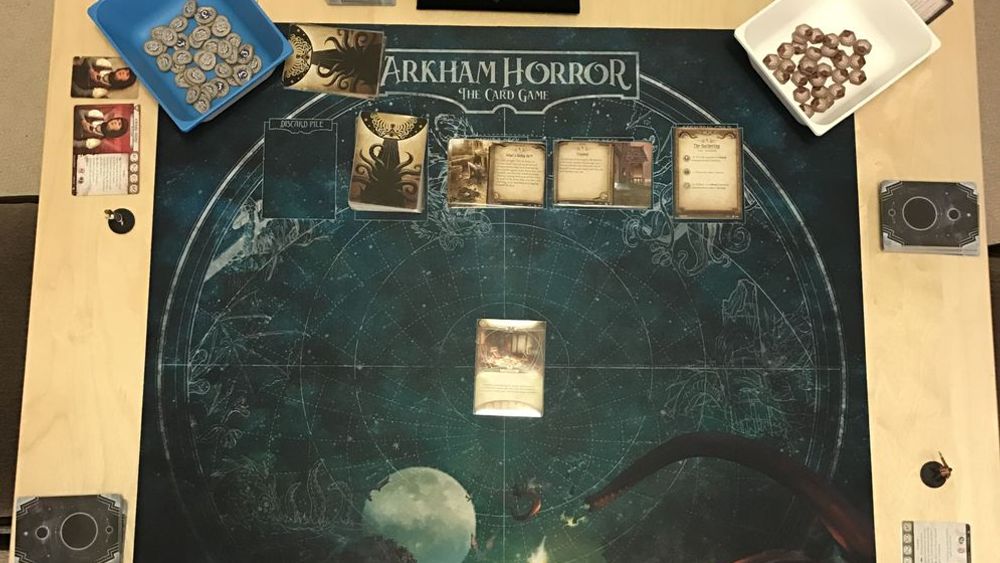
An Overview of Available Expansions
Expansions for Arkham Horror: The Card Game are like keys to forbidden libraries – each unlocking new narratives, investigators, and treacherous encounters. There are several types of expansions, from those that kick off new campaigns like The Dunwich Legacy and The Path to Carcosa, to stand-alone adventures such as Curse of the Rougarou and The Blob That Ate Everything.
Deluxe Expansions herald new cycles, bringing a fresh main narrative, while subsequent Mythos Packs continue the story with added mechanics and complexities. The Investigator Starter Decks are perfect for players ready to dive deeper into the game’s strategy with pre-built decks showcasing unique playstyles. Additionally, the Return to… series presents upgraded and enhanced versions of previous campaigns with a twist, perfect for revisiting favorite stories.
The Impact of Expansions on Replay Value
Expansions are akin to a master storyteller that never runs out of tales. Each new expansion reshapes the world of Arkham Horror in unexpected ways, offering new angles and strategies which significantly boost replayability. Remember the first time we sat down with The Dunwich Legacy? It gave the core experience an additional layer of depth that brought us hours upon hours of nightmarish joy.
Adding expansions often feels like injecting new DNA into the game’s ecosystem, creating hybrid experiences that captivate both seasoned and novice players. Campaigns evolve with each scenario, leading to outcomes influenced by earlier decisions and performance. The ability to tweak decks with new cards from expansions also ushers in a whole new level of strategy and customization. You end up seeing familiar scenarios through a different lens, strategizing fresh approaches or trying to outdo your past triumphs (or failures).
Expansions aren’t just additional content; they’re a promise that Arkham Horror will remain a living, breathing entity at your game nights. To all those who worry about the longevity of this game, I say, embrace the expansions, and watch the world of Arkham grow and thrive!
The Revised Core Set
Do you recall the way our hearts raced when we first laid eyes on the original core set of Arkham Horror: The Card Game? The revised core set is like revisiting an old friend who has undergone a significant transformation. It maintains all the compelling qualities of the original while introducing enhancements that streamline the experience for new and veteran players alike.

What’s New and Improved
The Revised Core Set of Arkham Horror: The Card Game has arrived much like the first light of dawn after a night of battling otherworldly horrors. It presents a cleaner, more refined rulebook that makes it easier to dive into the gloomy alleys of Arkham, with updated tokens and artwork breathing new life into the familiar.
In this refreshed version, you can find a welcome increase in the number of scenario cards, which minimize the need for duplicate sets. Furthermore, the inclusion of a ‘Campaign Guide’ allows for a smoother narrative journey. The new investigator cards boast a full playset, unlike the original core’s limited offerings, enabling a more complete deck-building experience from the get-go.
The Revised Core Set of Arkham Horror: The Card Game offers a cleaner rulebook, updated tokens and artwork, more scenario cards, a ‘Campaign Guide,’ and a full playset of new investigator cards for a more immersive and complete experience.
Is the Revised Core Set Worth It?
For those standing on the cusp of Arkham’s chaos, wondering if the Revised Core Set is the grimoire worth invoking – I will say, emphatically, yes. If you’re new to the game, this revised set is the ark you need to navigate the cosmic tides. It offers a full, robust entry point with the polished grace you deserve in a modern board game experience.
However, if you’re an Arkham veteran with the original set and expansions, the value lies in your passion for collectibles and the pleasure of updated components. The gameplay essence remains the same; the revised set amplifies the quality of life, inviting a sleeker expedition into madness. Weigh the nostalgia of your worn cards with the allure of fresh ink, and choose the path that calls to you.
Pros and Cons
In every journey through the cursed streets of Arkham, there are triumphant moments of discovery mixed with daunting shadows of despair. The same duality applies when looking at the pros and cons of Arkham Horror: The Card Game as a whole.
What to Love About Arkham Horror: The Card Game
Arkham Horror: The Card Game is a beautifully woven tapestry of immersive narratives that beckon you into a world where every decision ripples with consequence. The storytelling is sublime, with scenarios that create a cinematic tableau for the mind, and investigator arcs that add personal stakes to the eldritch struggle.
A key feature I adore is the deck-building aspect – it becomes an intimate dance with fate where each card you choose brings you closer to your ultimate strategy or unfathomable doom. It’s a masterpiece of a game where the mechanics and theme are so intertwined that every drawn card and played combo feels like a moment of high drama.
The co-op experience is another highlight. Teaming up with friends against the machinations of the Mythos creates bonds forged in the fire of shared peril and triumphs. And let me tell you, the satisfaction of conquering the unspeakable with allies is a joy that echoes beyond the game table.
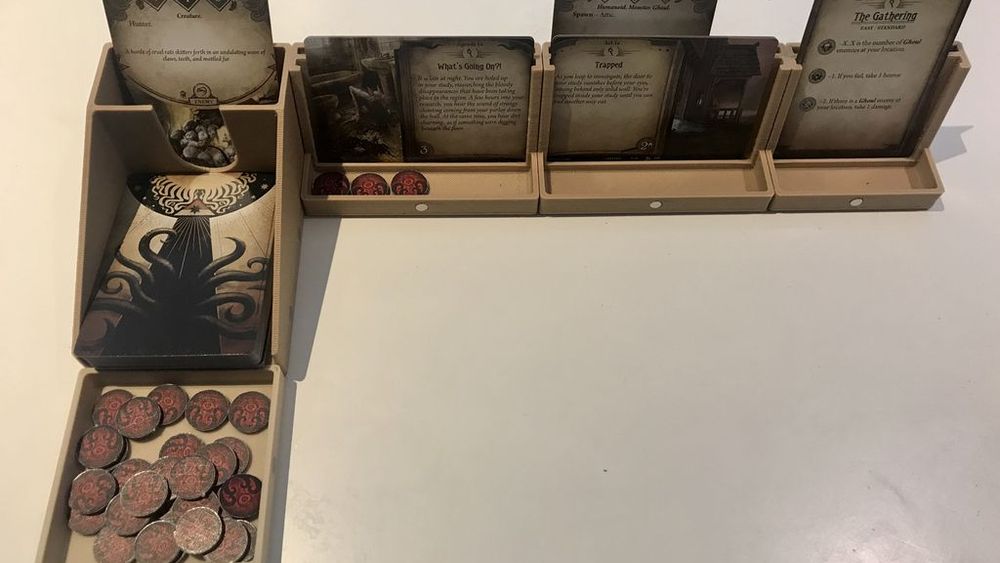
Potential Drawbacks to Consider
However, as with any ritual invoking cosmic forces, there are potential drawbacks to consider. The game can swing wildly with the winds of chance – a fact that may endear some to its unpredictability or frustrate others who find too much randomness in the chit draws. And yes, setup and bookkeeping can become arduous, leading to sessions where more time is spent shuffling decks and sorting components than actually playing.
The investment in expansions is another consideration, as this is not merely a one-time purchase but a journey with seemingly no end. Each new expansion beckons with more stories and mechanics but also adds to the financial and storage burden. For those who prefer to invest in a static collection, this ever-evolving library might be overwhelming.
The unpredictability and potential arduous setup and bookkeeping of the game may frustrate some players, while the ongoing investment in expansions can be overwhelming for those who prefer a static collection.
FAQs
1. How accessible is Arkham Horror: The Card Game for beginners?
Arkham Horror: The Card Game has a learning curve that might be steep for beginners, as it involves complex game mechanics and a detailed setup process. It’s rich with story and strategy, but newcomers might need a few plays to feel comfortable navigating the rules and flow of the game.
2. Can Arkham Horror: The Card Game be enjoyed without buying expansions?
Yes, Arkham Horror: The Card Game can be enjoyed without buying expansions. The core set provides a complete and thrilling experience on its own, with plenty of replay value as you explore different strategies and outcomes.
3. How does Arkham Horror: The Card Game compare to other LCGs?
Compared to other Living Card Games (LCGs), Arkham Horror: The Card Game stands out with its strong narrative focus and immersive thematic experience. Its cooperative nature sets it apart from more competitive LCGs, making it a unique experience in the genre.
4. What is the average playtime for a session of Arkham Horror: The Card Game?
The average playtime for a session of Arkham Horror: The Card Game varies, but it typically lasts between one to two hours, depending on the scenario and the number of players.
Conclusion
After a detailed Arkham Horror: The Card Game review, we come away with a vivid picture of a board game that is as challenging as it is rewarding. We’ve seen the dark alleys of Arkham come to life with every scenario, felt the intense highs and lows that the capricious hand of fate can deal, and adored each moment spent in deck-building reverie.
The harmonious blend of story, theme, and mechanical intricacy makes it easy to recommend this game to anyone who longs for depth and narrative in their board game experiences. Whether solitarily braving the cryptic otherworld or as a band of stalwart friends, the sense of adventure and accomplishment within the eldritch embrace of Arkham is profound.
In the end, one cannot help but be enamored with the expansive universe that Arkham Horror: The Card Game offers, despite its occasional lapse into chance’s harsh whims or the siren call of endless expansions. The sense of camaraderie, strategy, and narrative interwoven with the fate of the cosmos always calls us back for one more brush with the arcane unknown.
Thank you, fellow traveler, for taking this journey with me. Let’s shuffle the deck and start anew; for in Arkham, the end is always just another beginning. Until next time, take care and may your next draw be ever in your favor.
Warmly, Lucas
More Boardgame Reviews:
This article uses material from BoardGameGeek and is licensed under the Creative Commons Attribution-Share Alike License.

